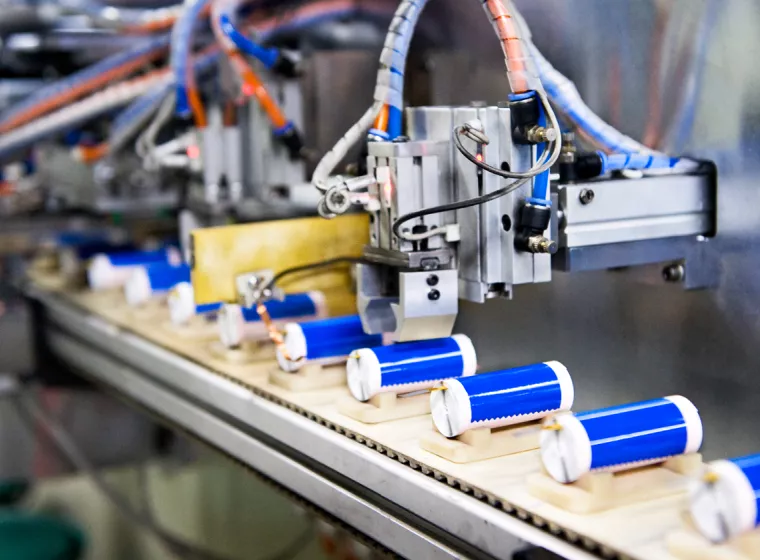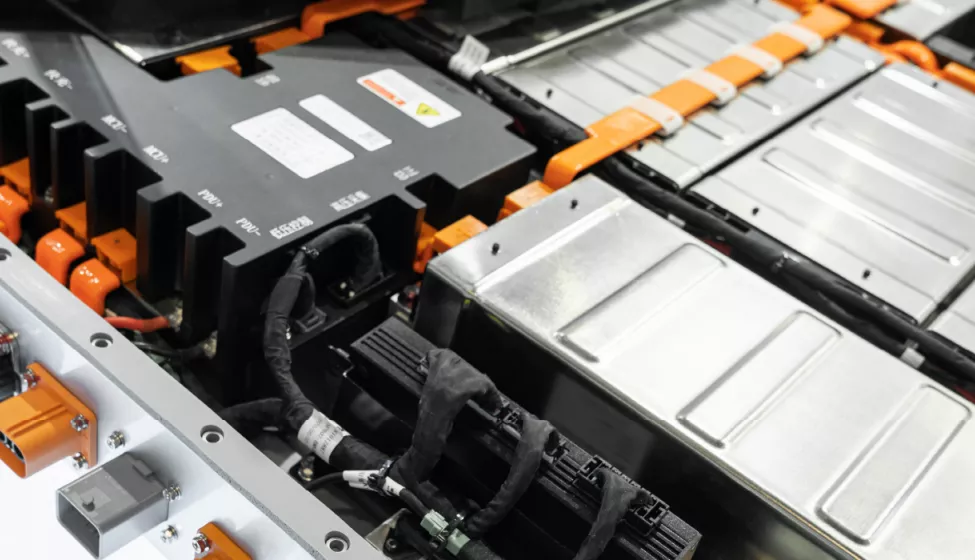July 7, 2022
The global electric vehicle market is exploding. More than 34 million lithium-ion battery-powered cars are projected to be sold in 2030. This increase in EV sales is fueling demand for lithium-ion batteries with global demand expected to increase annually by 25% reaching ~2,600 GWh in 2030 and to soon exceed the current minerals supply.
Globally, China controls most of the market for processing and refining cobalt, lithium, and other critical minerals. There is currently no refining or cathode production capacity in the U.S., and the U.S. does not have enough raw material for producing EV batteries into the near future.
Recycling is key to replenishing dwindling critical minerals supplies. In recognition of the importance of investing in the recycling infrastructure, the U.S. Department of Energy announced a $60M battery recycling program in May 2022 funded by last year's bipartisan infrastructure legislation to support second-life applications and new processes for recycling materials back into the battery supply chain.
Even with increased funding to develop recycling, battery sales have outpaced the development of recycling technologies and sustainable frameworks for managing lithium-ion batteries throughout their life cycle.
Regardless, OEMs, manufacturers, and other stakeholders are responsible for properly managing their lithium-ion batteries and require solutions for recycling challenges, proper handling (e.g., fires and employee safety issues), risk management, and compliance with complex and developing regulations. Awareness of these issues is crucial to minimizing the risks that OEMs, manufacturers, and stakeholders may face.
Properly characterizing Lithium-ion batteries throughout the lifecycle
With a projected end of life after 15 to 20 years, large, flammable lithium-ion batteries are expected to tax our recycling infrastructure, especially given that 11 million metric tons of lithium-ion batteries are expected to reach end of life by 2030. Regulatory requirements can vary depending on whether a lithium-ion battery is used, disposed, reused, repurposed, or recycled. Generators must understand when a lithium-ion battery is considered a "waste" and whether a waste lithium-ion battery is a "hazardous" waste.
To add to the complexity, both state and federal regulations must be consulted during waste characterization. Some state hazardous waste programs may be more stringent than the federal Resource Conservation and Recovery Act (RCRA) hazardous waste program.
According to the U.S. Environmental Protection Agency, lithium-ion batteries may meet the definition of hazardous waste under RCRA "if they exhibit a characteristic of hazardous waste such as ignitability, reactivity, or toxicity when they are disposed." Waste characterization and the magnitude of hazard posed by a waste lithium-ion battery depends on its chemical properties, which can vary widely between batteries, and its state of discharge. The regulatory compliance burdens for managing hazardous waste lithium-ion batteries are high, such as RCRA hazardous waste permitting requirements for recycling facilities and managing hazardous waste streams that may be generated during the recycling process.
Due to limitations in properly characterizing lithium-ion batteries given the potential variety in their shapes, sizes, compositions, and states of health, EPA recommends businesses manage lithium-ion batteries under the federal "universal waste" regulations in Title 40 of the Code of Federal Regulations part 273. The regulations require that the waste be sent to a permitted hazardous waste disposal facility or a recycler. EPA provides guidance on managing universal wastes such as handling, labeling, and waste accumulation time limits. However, EPA suggests businesses check with their state solid and hazardous waste agencies for additional information on applicable universal waste regulations.
Developing a sustainable, cost-effective recycling infrastructure
For battery and product manufacturers and businesses generating hazardous battery waste, a battery management plan aligned with Environmental, Social, and (Corporate) Governance considerations can help mitigate risks. Long-term environmental liabilities should be considered, such as future potential responsible party status in Superfund sites that may be involved in one stage of the lithium-ion battery life cycle, such as the recycling facility or waste disposal location.
Collection and transport
Developing take-back programs based on best practices and consumer education is a first step to optimizing collection. In addition to collecting waste lithium-ion batteries, stakeholders need innovative solutions for transporting large, end-of-life batteries from businesses and collection sites to recycling facilities, which can be expensive and pose safety risks. For instance, how do businesses determine whether their 1,000-pound, highly flammable EV batteries are fully discharged so they can be safely handled? How do they ensure that batteries have been properly characterized and are being stored and transported in accordance with applicable state and federal regulations?
Disassembly, extraction, and recovery
Given the nascent state of lithium-ion battery recycling, the process of recycling valuable materials — including disassembly, extraction, and recovery — will require significant scientific and engineering experience and facility investment to be accomplished profitably at scale and in compliance with developing policies and regulations.
Currently, the recycling process is not well developed. Since batteries have not been typically designed with recycling in mind, disassembly and size reduction via crushing and grinding are generally performed as a pre-treatment, which can be energy-intensive and result in material loss.
Two methods are usually used to extract valuable metals from batteries: pyrometallurgical (smelting) or hydrometallurgical (chemical leaching) processing. These processing methods separate recyclable materials based on differences in chemical and physical properties. Both methods may be costly and energy intensive, creating a barrier for prospective battery recyclers to enter the market. The variability in battery chemistry and design poses challenges for creating a standard processing stream for recovering battery components.
Because EV battery chemistries and sizes vary greatly and require different methods of disassembly, extraction, and recovery, cost-effective recycling solutions will need to be customized. Recyclers will want to determine whether their recycling processes are generating waste that might pose a risk to the environment by examining their waste streams such as:
- Burning — Are there pollution or emissions controls in place to capture toxic gases released through burning?
- Grinding — Is there a process for containing hazardous dust?
- Treatments Using Corrosive Chemicals — Is recycling waste disposed of properly, such as wastewater from processing and byproducts from extraction and recovery processes?
Understanding how recycling pathways, discharges, and other waste affects the environment is important, especially if the waste is hazardous, which triggers a set of complex requirements.
A greener future
Currently, there is interest in developing novel and cost-effective recycling methods that are less-energy intensive and capable of recovering high-quality minerals that can be reused in battery manufacturing or for other purposes. Already the ReCell Lithium Battery Recycling R&D Center — focused on cost-effective recycling processes to recover critical lithium-ion battery materials — is developing methods to recycle other materials, including the anode, separator, and housing, in addition to the cathode.
Founded by DOE's Vehicle Technologies Office, the ReCell Center uses direct recycling: the recovery, regeneration, and reuse of battery components directly without breaking down the chemical structure, which promises to create a lower-cost re-constituted material for battery manufacturers, reducing the cost of EV batteries and driving up the value in recycling EV batteries.
How Exponent Can Help
Our team of engineers and scientists have the expertise to help clients manage lithium-ion batteries throughout their life cycle safely, sustainably, and cost-effectively at each step in the supply chain. We provide solutions to the multiple regulatory and technical challenges involved in battery design, collection, transport, disassembly, extraction, and recovery. Our team's rigorous environmental and hazards analysis can help businesses reduce physical, transitional, and liability risks while increasing the profitability of recycling.
What Can We Help You Solve?

Sustainability & Climate Change
Scientific and engineering insights to improve and quantify sustainability practices and secure vital resources and assets.

Environmental & Earth Sciences
Understand how your business impacts the environment and mitigate damage and environmental risk.

Battery Supply Chain Services
End-to-end battery supply chain support including evaluating potential manufacturer partners and suppliers


